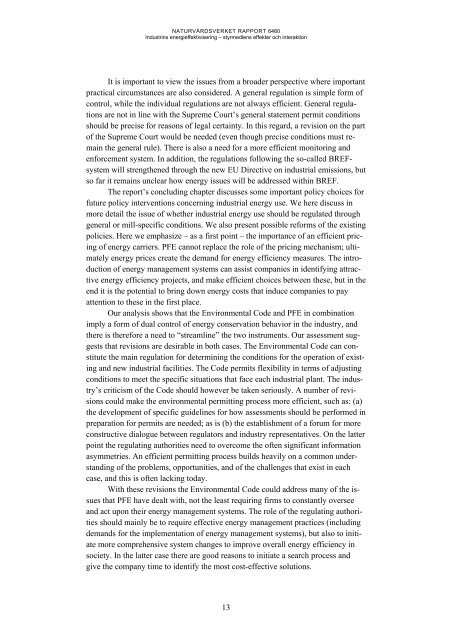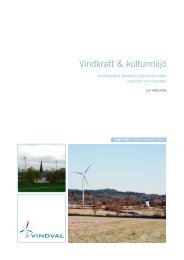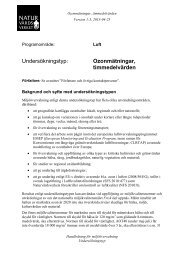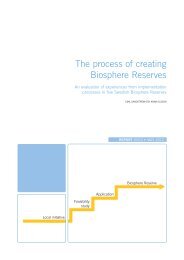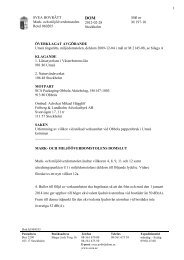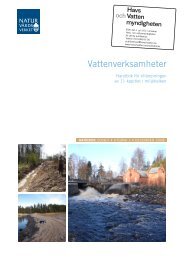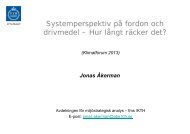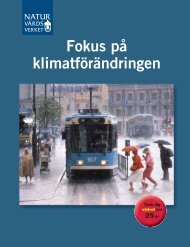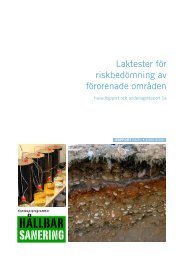Industrins energieffektivisering - styrmedlens ... - Naturvårdsverket
Industrins energieffektivisering - styrmedlens ... - Naturvårdsverket
Industrins energieffektivisering - styrmedlens ... - Naturvårdsverket
You also want an ePaper? Increase the reach of your titles
YUMPU automatically turns print PDFs into web optimized ePapers that Google loves.
NATURVÅRDSVERKET RAPPORT 6460<br />
<strong>Industrins</strong> <strong>energieffektivisering</strong> – <strong>styrmedlens</strong> effekter och interaktion<br />
It is important to view the issues from a broader perspective where important<br />
practical circumstances are also considered. A general regulation is simple form of<br />
control, while the individual regulations are not always efficient. General regulations<br />
are not in line with the Supreme Court’s general statement permit conditions<br />
should be precise for reasons of legal certainty. In this regard, a revision on the part<br />
of the Supreme Court would be needed (even though precise conditions must remain<br />
the general rule). There is also a need for a more efficient monitoring and<br />
enforcement system. In addition, the regulations following the so-called BREFsystem<br />
will strengthened through the new EU Directive on industrial emissions, but<br />
so far it remains unclear how energy issues will be addressed within BREF.<br />
The report’s concluding chapter discusses some important policy choices for<br />
future policy interventions concerning industrial energy use. We here discuss in<br />
more detail the issue of whether industrial energy use should be regulated through<br />
general or mill-specific conditions. We also present possible reforms of the existing<br />
policies. Here we emphasize – as a first point – the importance of an efficient pricing<br />
of energy carriers. PFE cannot replace the role of the pricing mechanism; ultimately<br />
energy prices create the demand for energy efficiency measures. The introduction<br />
of energy management systems can assist companies in identifying attractive<br />
energy efficiency projects, and make efficient choices between these, but in the<br />
end it is the potential to bring down energy costs that induce companies to pay<br />
attention to these in the first place.<br />
Our analysis shows that the Environmental Code and PFE in combination<br />
imply a form of dual control of energy conservation behavior in the industry, and<br />
there is therefore a need to “streamline” the two instruments. Our assessment suggests<br />
that revisions are desirable in both cases. The Environmental Code can constitute<br />
the main regulation for determining the conditions for the operation of existing<br />
and new industrial facilities. The Code permits flexibility in terms of adjusting<br />
conditions to meet the specific situations that face each industrial plant. The industry’s<br />
criticism of the Code should however be taken seriously. A number of revisions<br />
could make the environmental permitting process more efficient, such as: (a)<br />
the development of specific guidelines for how assessments should be performed in<br />
preparation for permits are needed; as is (b) the establishment of a forum for more<br />
constructive dialogue between regulators and industry representatives. On the latter<br />
point the regulating authorities need to overcome the often significant information<br />
asymmetries. An efficient permitting process builds heavily on a common understanding<br />
of the problems, opportunities, and of the challenges that exist in each<br />
case, and this is often lacking today.<br />
With these revisions the Environmental Code could address many of the issues<br />
that PFE have dealt with, not the least requiring firms to constantly oversee<br />
and act upon their energy management systems. The role of the regulating authorities<br />
should mainly be to require effective energy management practices (including<br />
demands for the implementation of energy management systems), but also to initiate<br />
more comprehensive system changes to improve overall energy efficiency in<br />
society. In the latter case there are good reasons to initiate a search process and<br />
give the company time to identify the most cost-effective solutions.<br />
13


